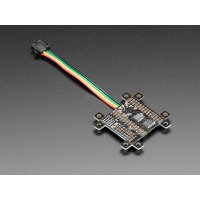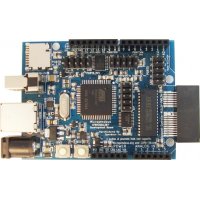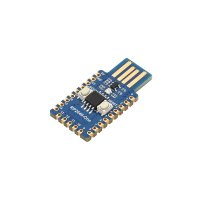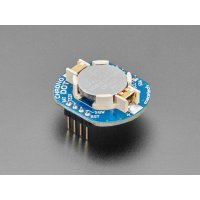Teensy 4.0 is the latest Teensy, offering the fastest microcontroller and powerful peripherals in the Teensy 1.4 by 0.7 inch form factor.

Processor:

Technical Specifications :
- ARM Cortex-M7 at 600 MHz
- 1024K RAM (512K is tightly coupled)
- 2048K Flash (64K reserved for recovery & EEPROM emulation)
- 2 USB ports, both 480 MBit/sec
- 3 CAN Bus (1 with CAN FD)
- 2 I2S Digital Audio
- 1 S/PDIF Digital Audio
- 1 SDIO (4 bit) native SD
- 3 SPI, all with 16 word FIFO
- 3 I2C, all with 4 byte FIFO
- 7 Serial, all with 4 byte FIFO
- 32 general purpose DMA channels
- 31 PWM pins
- 40 digital pins, all interrrupt capable
- 14 analog pins, 2 ADCs on chip
- Cryptographic Acceleration
- Random Number Generator
- RTC for date/time
- Programmable FlexIO
- Pixel Processing Pipeline
- Peripheral cross triggering
- Power On/Off management
Pinouts:


- When running at 600 MHz, Teensy 4.0 consumes approximately 100 mA current.
- Teensy 4.0 provides support for dynamic clock scaling. Unlike traditional microcontrollers, where changing the clock speed causes wrong baud rates and other issues, Teensy 4.0 hardware and Teensyduino's software support for Arduino timing functions are designed to allow dynamically speed changes. Serial baud rates, audio streaming sample rates, and Arduino functions like delay() and millis(), and Teensyduino's extensions like IntervalTimer and elapsedMillis, continue to work properly while the CPU changes speed.
- Teensy 4.0 also provides a power shut off feature. By connecting a pushbutton to the On/Off pin, the 3.3V power supply can be completely disabled by holding the button for 5 seconds, and turned back on by a brief button press. If a coin cell is connected to VBAT, Teensy 4.0's RTC also continues to keep track of date & time while the power is off.
- Teensy 4.0 also can also be overclocked, well beyond 600 MHz!
Cortex-M7 Processor Details
- ARM Cortex-M7 brings many powerful CPU features to a true real-time microcontroller platform.
- Cortex-M7 is a dual-issue superscaler processor, meaning M7 can execute 2 instructions per clock cycle, at 600 MHz! Of course, executing 2 simultaneously depends upon the compiler ordering instructions and registers. Initial benchmarks have shown C++ code compiled by Arduino tends to achieve 2 instructions about 40% to 50% of the time while performing numerically intensive work using integers and pointers.
- Cortex-M7 is the first ARM microcontroller to use branch prediction. On M4, loops and other code which much branch take 3 clock cycles. With M7, after a loop has executed a few times, the branch prediction removes that overhead, allowing the branch instruction to run in only a single clock cycle.
- Tightly Coupled Memory is a special feature which allows Cortex-M7 fast single cycle access to memory using a pair of 64 bit wide buses. The ITCM bus provides a 64 bit path to fetch instructions. The DTCM bus is actually a pair of 32 bit paths, allowing M7 to perform up to 2 separate memory accesses in the same cycle. These extremely high speed buses are separate from M7's main AXI bus, which accesses other memory and peripherals. 512K of memory can be accessed as tightly coupled memory. Teensyduino automatically allocates your Arduino sketch code into ITCM and all non-malloc memory use to the fast DTCM, unless you add extra keywords to override the optimized default.
- Memory not accessed on the tightly coupled buses is optimized for DMA access by peripherals. Because the bulk of M7's memory access is done on the 2 tightly coupled buses, powerful DMA-based peripherals have excellent access to the non-TCM memory for highly efficient I/O.
- Teensy 4.0's Cortex-M7 processor includes a floating point unit (FPU) which supports both 64 bit "double" and 32 bit "float". With M4's FPU on Teensy 3.5 & 36, and also Atmel SAMD51 chips, only 32 bit float is hardware accelerated. Any use of double, double functions like log(), sin(), cos() means slow software implemented math. Teensy 4.0 executes all of these with FPU hardware.
Code Security:
- Program Memory Protection
- Code security protects your program code from unauthorized access and coping. When compiling, your program is encrypted. When run, the IMXRT Bus Encryption Engine provides on-the-fly decryption as your program executes. If an attacker removes and reads the flash memory chip from Teensy 4.1, or attempt to capture the USB communication from Teensy Loader, or copies the EHEX file Teensy Loader opens, they get only an encrypted copy of your program.
- Secure Firmware Update
- Users can be given an EHEX file and Teensy Loader to securely update commercial products or secure applications which embed a Lockable Teensy, without gaining access to the original program code. Of course the key already in its fuse memory and secure mode locked when the product is shipped.
- Permanent Secure Mode
- Brand new Teensy 4.1 can only run unencrypted programs. Once a key is written into fuse memory, either encrypted or unencrypted programs can run. Secure mode permanently disables the ability to run unencrypted code, and activates hardware security features.
- Lockable Teensy
- Secure mode can only be activated on Lockable Teensy. While Standard and Lockable Teensy are identical hardware, the permanent fuse configuation differs. Standard Teensy does not allow changes to fuses affecting boot or other critical configuration. Standard Teensy is meant to safe from "bricking" by programs which could write to fuse memory, but this safety means secure mode can not be activated. Standard Teensy can have a key written and can run encrypted code, but encryption alone is not fully secure. Only Lockable Teensy provides proper code security, and only when a key is written and secure mode is locked.
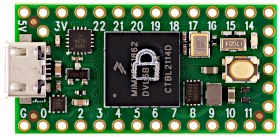
Lockable Teensy - White Lock Stamp
- Authentication
- The encryption process includes digital signature authentication. In secure mode, this signature is checked before any code can be decrypted.
- JTAG Disable
- Secure mode permanently disables the JTAG port. To enter programming mode without JTAG, Teensy Loader and the EHEX file automatically utilize a loader utility which is authenticated by your key's digitial signature, and in turn uses secure hash checks to fully authenticate all components of the programming process.
- EHEX File Format
- Teensyduino packages your encrypted code, metadata, a startup shim, loader utility, digital signatures and other essential details into a single EHEX file. This EHEX may be given to customers or untrusted parties to perform code updates with the convenice of a single file. The EHEX format and encryption details are documented on the code security page
- Key Management
- To make creating and using your key simple, Teensyduino adds a "Teensy 4 Security" window to the Arduino Tools menu. These functions can also be accessed from a command line utility for use from non-Arduino tools or automated scripts.
- 1 x Teensy 4.0
Teensy 4.0 Development Board
- Brand: PJRC
- Product Code: PJRC-Teensy-4.0
- Reward Points: 25
- Availability: In Stock
-
रo 2,505.00
- Price in reward points: 2505
-
- 6 or more रo 2,485.00
- 13 or more रo 2,465.00
- 31 or more रo 2,445.00
- 63 or more रo 2,425.00
Available Options
Related Products
Teensy++ 2.0
The Teensy++ USB Development Board is a complete USB-based microcontoller development system. Only a..
रo 2,357.00 रo 2,185.00
Teensy LC - Development Board
Teensy-LC (Low Cost) is a powerful 32 bit microcontroller board, with a rich set of hardware periphe..
रo 1,229.00 रo 1,194.00
Teensy 3.2
Teensy 3.2 features a 32 bit ARM processor. Teensy 3.2 is a direct, 100% compatible replacement ..
रo 1,730.00 रo 2,005.00
Audio Shield For Teensy 4.0 (Rev D)
This audio adaptor lets you easily add high quality 16 bit, 44.1 kHz sample rate (CD quality) audio ..
रo 1,721.00 रo 1,032.00
Adafruit 4828 SmartMatrix SmartLED Shield for Teensy 4
The SmartLED Shield gives you an easy way to connect up a Teensy 4 or a Teensy 4.1 to one of our RGB..
रo 2,423.00
Nooelec Micropendous Android ADK Development Board
Android ADK Compatiblity! Tested with a Google Nexus S and an LG Optimus One (P500). Will work..
रo 6,667.00
Waveshare 22809 RP2040-One, 4MB Flash MCU Board Based On Raspberry Pi RP2040
Waveshare RP2040-One, 4MB Flash MCU Board Based On Raspberry Pi RP2040RP2040-Onea Pico-like MCU boar..
रo 484.00 रo 576.00
Adafruit 255 ChronoDot - Ultra-precise Real Time Clock - v3
The ChronoDot V3 is the latest version of macetech’s popular ChronoDot line of products. Designed du..
रo 2,125.00
Tags: Teensy 4.0, PJRC, Cortex-M7

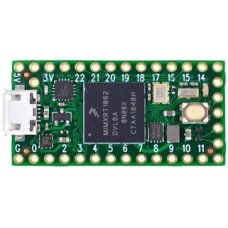


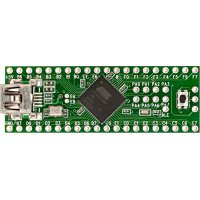
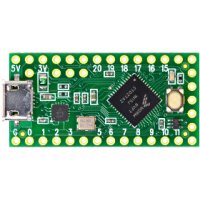
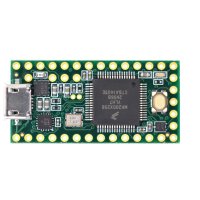
-200x200.jpg)
